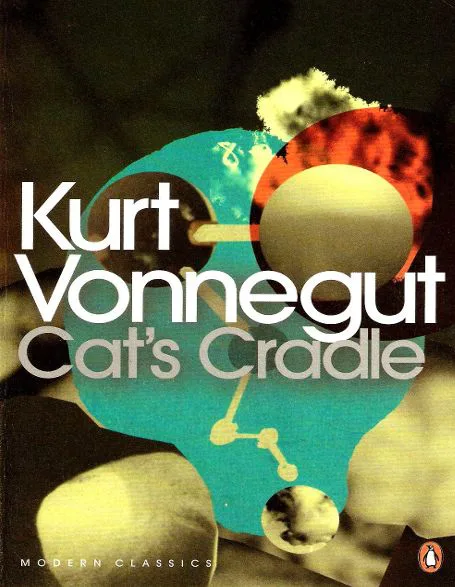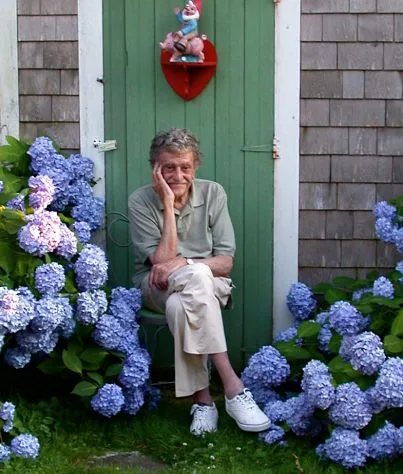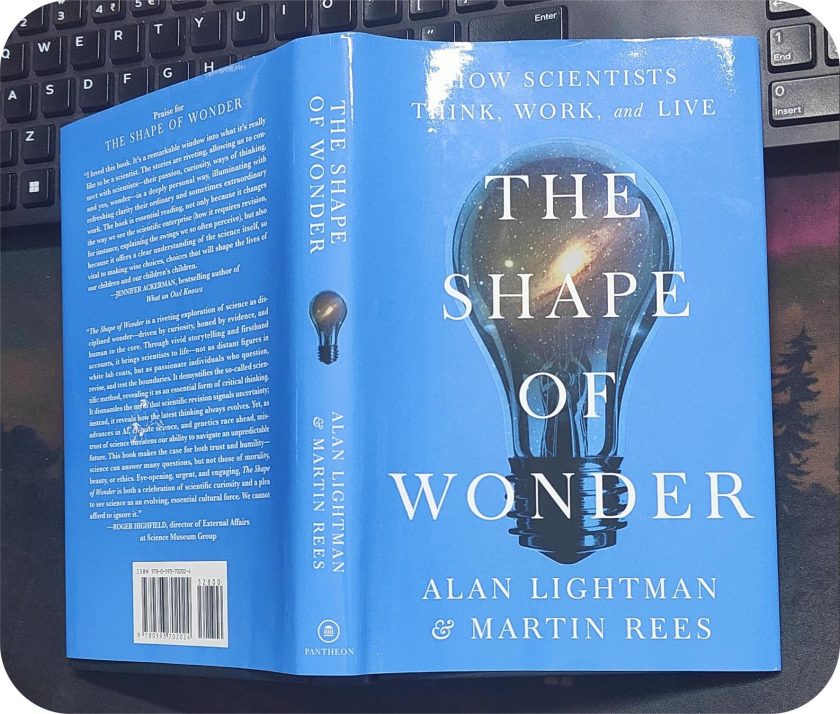
Kurt Vonnegut’s mind was a treasure trove of compelling and thought-provoking ideas, woven into narratives that challenged conventions, provoked introspection, and sparked conversation. His ability to engage readers on multiple levels – whether through his biting satire, profound insights, or dark humor – is both rewarding and intellectually stimulating.
His books possess a timeless quality that resonates with readers across generations. And often reveal new layers of meaning upon each re-reading. Every time I dive into one of Kurt Vonnegut’s books, I can’t help but feel that whichever one I’m currently reading is my favorite.
This time, I’ll be discussing Kurt Vonnegut’s satirical postmodern novel “Cat’s Cradle.” First published in 1963, the novel delves into a myriad of issues, including science, technology, religion’s purpose, and the arms race. Through its narrative, “Cat’s Cradle” offers a thought-provoking exploration of these themes, often employing satire and dark humor to illuminate the complexities of the human condition.
The Plot
The book starts with a flashback narrated by John, or Jonah as he now calls himself. John explains that once when he was young, he had set out to “collect material for a book to be called The Day the World Ended” – insinuating about the day the atomic bomb was dropped on Hiroshima. Thus, a factual book, as he calls it. He then goes on to say that he was once a Christian, but now embraces Bokononism, a religion from the Caribbean Island of San Lorenzo.
Moving further he explains that the book required to gain insights into Dr. Felix Hoenikker, a key figure in the atomic bomb’s development, through his children: Frank, Angela, and Newt. And so, he plans to touch base with them.
Newt, the youngest, recalls his emotionally detached father’s failed attempt at a cat’s cradle during that fateful day. This shows Hoenikker’s brilliance but lack of emotional depth. Angela provides an address for John to reach out to her, while Frank’s whereabouts remain unknown.
After a year, John takes a writing job in Ilium, New York. This also happens to be the Hoenikkers’ former residence. John, here again delves into Dr. Hoenikker’s old workplace and their former neighbourhood. Here, he gets to know about “ice-nine”, a substance capable of cataclysmic freezing. And the compound was conceived by the scientist at the behest of the U.S. military.
As the plot moves further, John takes up another writing assignment, particularly, an article about Julian Castle. He (Julian) was once an irresponsible playboy, but later turned his attention to charity via his Castle Sugar Corporation. He opened a hospital on San Lorenzo where Castle Sugar operated. John journeyed to the island to interview him for a magazine.
So, as he was traveling to the island, he encounters various characters, including the American ambassador and the Hoenikker siblings, en route to Frank’s (oldest son of Hoenikker’s) wedding to Mona, the dictator’s daughter. While doing research into San Lorenzo’s tumultuous history onboard, John discovers Bokonon’s origins and the outlawed religion’s formation. Bokonon, originally named Lionel Boyd Johnson, co-founded the Republic of San Lorenzo alongside Earl McCabe, a former US Marine deserter. Together, they established the religion of Bokononism.
Upon his arrival, John becomes entangled in political machinations when Frank urges him to take over the presidency following the impending death of ‘Papa’ Monzano, who is the current dictator of San Lorenzo but is taken ill. Formerly, he served as Earl McCabe’s right-hand man and designated successor. And at the moment, he has appointed Frank Hoenikker as his own successor.
Despite the surreal nature of the situation, John acquiesces, swayed by financial inducements and the chance to marry Mona. Embracing Bokononism, John engages in the religion’s ceremonies, including the ritual of boko-maru. It happens to be a quasi-erotic Bokononist practice in which two individuals rub the soles of their feet together.
Then there happens a series of escalating crises on the island of San Lorenzo. With ‘Papa’ Monzano’s impending death, John is tasked with capturing Bokonon as a means to maintain control. However, before this can be resolved, ‘Papa’ dies from poisoning by ice-nine. The death of ‘Papa’ triggers chaos on the island and sets off a catastrophic global event: the freezing of water due to ice-nine contamination. This sudden freezing leads to widespread panic and devastation, not just on San Lorenzo but potentially worldwide.
In the chaos that follows, John witnesses the tragic consequences of Bokonon’s teachings and Mona’s demise. Bokonon’s philosophy likely plays a role in the mass suicides, as his teachings often involve existential and nihilistic themes that can lead individuals to despair or extreme actions.
While Mona’s death not only deepens the emotional resonance of the narrative but also underscores the broader implications of the events unfolding. In a way, her demise becomes a microcosm of the larger narrative. Thus, illustrating the human toll and adding layers of complexity to the story’s thematic exploration.

Takeaway
The book presents a stark example of how despite our efforts to impose order and meaning onto the world, we are ultimately at the mercy of chaotic forces beyond our control.
When it comes to scientific ambition, humanity’s relentless pursuit of knowledge and progress can yield dangerous consequences when ambition remains unchecked. Religion, on the other hand, is seen as perpetuating “lies” or “harmless untruths” only to provide a sense of purpose, morality, and structure in society, often under the guise of divine authority or revelation.
Kurt Vonnegut’s works often delve into the existential quest for meaning in a seemingly indifferent universe, and “Cat’s Cradle” is a prime example of this exploration. The novel explores how humans grapple with the absence of inherent meaning in their lives and the ways in which they attempt to manufacture it. For instance, Ice-Nine, with its catastrophic potential to freeze all water on Earth, becomes a metaphor for humanity’s capacity to create destructive meaning out of seemingly innocuous pursuits.
Also, this book reminds me of a quote from J. Robert Oppenheimer, reflecting on the detonation of the first atomic bomb during the Trinity test,
“We knew the world would not be the same. A few people laughed, a few people cried, most people were silent. I remembered the line from the Hindu scripture, the Bhagavad-Gita. Vishnu is trying to persuade the Prince that he should do his duty and to impress him takes on his multi-armed form and says, “Now, I am become Death, the destroyer of worlds.” I suppose we all thought that one way or another.”
The novel prompts readers to consider the ramifications of unchecked technological advancement. And the need for ethical considerations in the pursuit of knowledge and progress.
Overall, “Cat’s Cradle” is not only a gripping and suspenseful read due to its apocalyptic premise, but one of its remarkable aspects is the vibrant and dynamic nature of its characters. Each character is distinct, with their own quirks, motivations, and internal conflicts. From the enigmatic figure of Bokonon to the bumbling yet brilliant scientist Felix Hoenikker, the characters in the novel come alive on the page, engaging readers with their complexity and humanity. It is this combination of compelling narrative and vibrant characterization that makes the novel such an enjoyable and thought-provoking read. I’m sure those who enjoy thought-provoking literature will find it a rewarding read.



